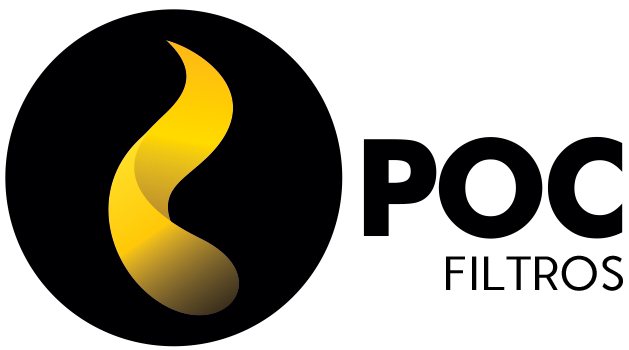Hello, meet a water and diesel separator filter installed in a tank of 15 thousand liters of fuel oil.
As we have already written in other articles, it is impossible to avoid the presence of water in the fuel. However, it is perfectly possible to control the damage of this and other contaminants with the installation of a water and diesel separator filter.
The removal of contaminants, such as water and solid particles, prevents the early saturation of the machines’ original filters, in addition to protecting nozzles, pumps and injection engines.
Watch the VIDEO and understand how a water and diesel separator filter works:
Meet POC a diesel and water separator filter with high efficiency. It can be installed directly on machines and vehicles, or also in fuel distribution tanks, either for cleaning or filling.
How a water and oil separator filter works
Water separators are used in conjunction with moisture control measures inside the oil, which are:
- Addition of additives to the oil.
- Installation of desiccant vents.
- Good storage and handling practices.
- Periodic oil analysis.
However, these measures do not completely prevent water from entering the system. For this reason, it is necessary to adopt practices to separate water from oil. The most efficient of these is filtration.
Diesel and water separator filter
In the case of diesel engines, the separation of emulsified water from oil has long been a requirement. For this reason, it is essential to include a filtering system suitable for your needs. Learn more about the operation of these filters, which are essential for the proper functioning of diesel engines and hydraulic systems.
The separation of water from diesel oil is done through the application of filtration systems. Typically, the filtering medium adopted is a hydrophobic barrier, such as cellulose treated with layers of silicone, which retains water on its moisture-repellent surface. The water in the fuel is discarded and accumulates upstream of the oil flow inside the filter. As more water is extracted, the drops coalesce in larger size and are drained into a collecting cup.
Another efficient way of filtering water from the oil is through deep coalescent hydrophilic filter media, such as glass microfiber. This material has a high affinity for water molecules. Therefore, the water is attracted to the filter medium and accumulates over time, forming massive drops. Upstream of the flow, a collector is installed where the water will fall due to its higher density, while the fuel will rise up to the filter outlet.
Other ways of removing moisture from the oil are:
-
- Severity separation
- Centrifugal separation
- Coalescent separation
- Absorbent separation
- Vacuum dehydration
VIDEOS – Embedded water and diesel separator filter
Where does the water that contaminates machine oils come from?
The main source of moisture is atmospheric air. Even living in places with low relative humidity, there is a risk of contamination by other sources. The most common origins of water in oil are:
- Moisture or water enters through vents, filters, seal or cover in the system. For those dealing with tractors in the field, rain water may enter the vent pipes or the discharge, for example.
- Leaks in refrigeration systems, such as heat exchangers and coolers. You have certainly noticed that older air conditioners produce drops of water at the outlet of the engines. If there is a problem with the internal system, this water can splash and leak into the engine.
- Condensation in tanks or lubrication systems, especially if they are exposed to air very often.
- Residual humidity from washing equipment.
- Water entering during filling, sampling, oil change.
As we can see, a good part of the contamination can be mitigated or prevented by adopting good maintenance practices.
Why use oil and water separator filter?
Because water causes a lot of damage when emulsified in the oil. When water enters the oil, it does not dilute completely, forming an emulsion. In this way, parts of the water molecule are capable of causing chemical reactions inside the oil, which, in turn, will impact the machine in which it is inserted. The oxidation reactions triggered by the presence of water, therefore, have harmful effects on the equipment and on the oil itself. The most common are:
- Rust and corrosion: metals exposed to water and oxygen will form metal oxides over time, which can cause flaking on the metal surface and thus cause abrasion in the system.
- Cavitation (vapor bubbles): vapor bubbles or cavities in the fluid are formed when the pressure of a system (at suction points of pumps, for example) is less than the vapor pressure of water. If they reach high pressure areas of the system, these bubbles implode and condense again, returning to the liquid state. This event can generate great force and cause superficial fatigue and erosion at the point of collapse.
- Hydrogen embrittlement: cracks in high-strength metals can be induced by hydrogen molecules. In this case, the water present in the oil will provide the hydrogen that will trigger such a weakening process.
- Reduction of lubricating properties: the oil viscosity increases with increasing pressure. This characteristic is fundamental for the moving parts that operate under high pressure, guaranteeing the formation of the oil film on the metallic surfaces in contact. The viscosity of the water does not increase with pressure, which implies greater friction between moving parts, causing wear and fatigue in the material when there is excess moisture in the oil.
- Hydrolysis: water causes the degradation of oil and additives through hydrolysis, a chemical reaction in which a molecule binds to a substance. For example, lubricants whose base is the ester contaminated by water can undergo reaction and be transformed into acids and alcohols. The hydrolysis reaction is accelerated in the presence of heat, metal particles or acids.
- Decrease in the effectiveness of protective additives: oxidation by water is favored in the presence of heat, oxygen and metal. When such a reaction occurs, oxidizing agents and free radical compounds will be formed, reactive components. The function of the additives, in this case, is to prevent neutralizing this process. When there is excess moisture, however, water molecules reduce the availability of additives, increasing oxidation. In addition, water can attach to hydrophilic metal surfaces or displace polar additives on the metal surface.
- Foam in oil: water contamination is one of the causes of foam and water ingress. Water and oxygen can cause the problems already described of oxidation, reduced lubricating properties and cavitation.
Water and diesel separator filter: 5 benefits
1º GUARANTEE AND RESISTANCE
The POC is doubly more resistant, on the inside the steel walls offer greater resistance to the corrosive action of diesel oil. On the outside, the electrostatic painting guarantees an anticorrosive finish, allowing the product to be used especially in an external environment. The purifier has a 6-year life and a 2-year factory warranty.
2º EFFICIENT CLEANING
POC is an excellent solution as a water separating filter. Its drainage system is able to eliminate large amounts of contamination which allows the removal of 99% of water and contaminants in general (up to 10 microns) earth, sand, rust, filings, pesticides, among others;
3º OPERATION WITHOUT COMPLICATION
The POC is easy to install and operate. It can be used in supply tanks by gravity or by pumping. The version for machines and equipment is used as a pre-filter separating the water present in the diesel with great efficiency, leaving the fuel clean for combustion.
4º RIGHT INVESTMENT
The POC is a compact and low cost equipment, it is a filtration system that does not use a refill or filter element so it is more economical. Its high efficiency in removing water and solid particles (up to 10 microns) prevents the early saturation of the original filters, in addition to protecting nozzles and pumps from injections, avoiding unscheduled maintenance.
5º VERSATILE EQUIPMENT
The POC is suitable for any model and brand of engine, it can be sized to meet any fuel filtration flow. To meet the demand for fuel supply and distribution, its flow can be sized between 50 to 2000 liters per minute. For machines and vehicles, the sizing can be done for low and high flow engines, between 4 to 12 cylinders, with consumption varying between 35 to 220 liters per hour.
Water and diesel separator filter: learn to control contamination damage.
The filtersPOC and Austech perform this function with excellence. POC purifiers are capable of removing up to 99% of water present in diesel oil, in addition to contaminants of up to 10 microns. Austech equipment is microfiltration systems for diesel and lubricant oils. Their function is similar to that of a POC system, however with much smaller particle size (particles up to 2 microns). In both cases, the filters will protect the machines from the damage mentioned in the previous item.
Talk to a fuel filtration and microfiltration specialist.



